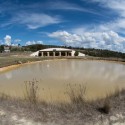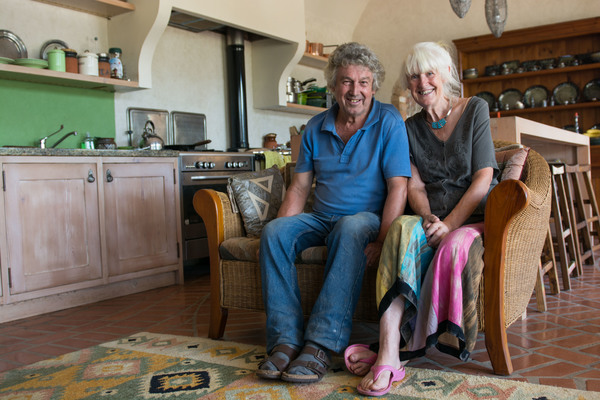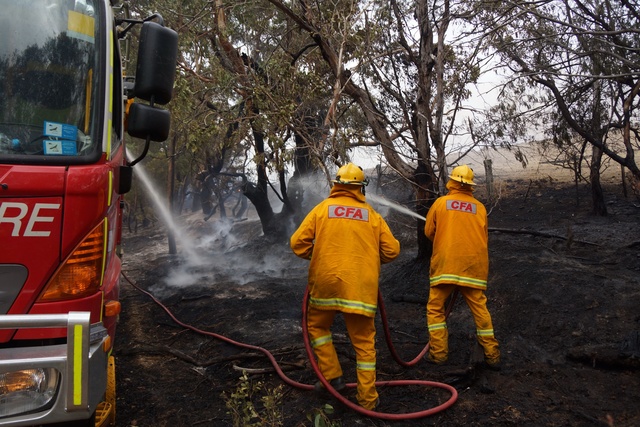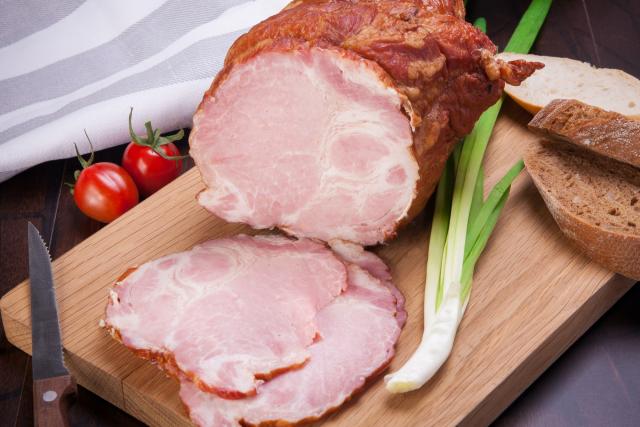By JESSE GRAHAM
AFTER the 2009 bushfires destroyed their Steels Creek home, Edd and Amanda Williams set to work creating a masterpiece – an underground house where practicality and sustainability are at the forefront.
The Underground House is located deep in Steels Creek, down winding dirt roads and a long driveway, far away from mobile phone reception.
Coming around the corner, the house’s chimneys and Solatubes poke out of a hill – the front, north-facing side of the house, meanwhile, sits forward and unobscured.
Behind a set of double-glazed windows is a small (and hot) room full of tropical plants, and another set of double-glazed windows that leads to the kitchen and into the house proper.
Edd, seated in an armchair in the cool house – it’s 30 degrees outside, and significantly hotter in the room with the plants – explained that the room is designed to help regulate the heat in the underground house.
“We open this up in winter, in the day time, and the heat from there comes in here, and at night we close it up,” he said.
“This time of the year, when it’s really hot outside, we keep these closed all day, and we open up at night – by moving these doors open and shut at different times of the day, you control the temperature inside the house.”
He said the house was designed by their son, Soft Loud House Architects’ Alvyn Williams, after the family’s house was burnt down during the 2009 Black Saturday bushfires.
Amanda said the decision to go underground was made during the long drought, where water was scarce and the panic of the fire season made the area like a “war zone”.
“I had a ‘what would I do?’ scenario – if I was alive, and my family was alive, but the house was burnt,” she said.
“In that case, I said, well, next time, I’ll build underground – instead of spending every summer and every time I went shopping watching the horizon.”

The attention to detail in the finished house shows – the couple said the width of the kitchen was designed so that, in winter, the sun hits the back wall.
In summer, the light barely makes it past the windows.
Edd said the house was built “like a carpark”, with solid concrete for the walls and roof.
This, he said, gives the house a thermal mass which uses the soil around the house to cool and heat the house naturally.
Vents running from the surface provide cool air, even on warmer days.
The house is powered by solar panels, which return so much power to the grid that money from energy companies offset the price of buying wood for the stove and gas for an underground cylinder.
When it comes to bushfire safety, the house is well-equipped with a moat running around the property, a large dam nearby, fire-resistant materials and perspex covering the Solatubes that bring light to the rear rooms of the house.
The area around the house is cleared to stop the approach of fire and a small ‘cave’ is attached to the house as an escape from radiant heat.
Another benefit of being underground, Edd said, is that the house is also sound-proofed, and maintenance is as simple as walking outside and up the hill.
“If people next door have a party, we don’t even know,” he said.
“They say ‘we hope we weren’t too noisy last night’, and we say ‘what?’”
The house has been featured on television shows in the past and is also included in an exhibition running until 15 May at the Yarra Ranges Regional Museum in Lilydale.
Amanda said that underground houses were “slightly more expensive” to build than regular houses in the beginning and that sites needed to be suited to the project, such as having a slope and a north-facing area for the frontage.

She said the reaction to the house had been mixed, but had inspired others.
“A lot of people come into the ‘I wish’ or ‘idealistic’, some people come into the category of the older people – ‘I don’t know how you live in a house that’s so different’,” she said.
“So you have that reaction, like it doesn’t feel like a proper house and then there are one or two people who drive away and try to do something similar.”
The couple document some of their living experience via their Facebook Page, Underground House, Steels Creek, including some odd moments, such as finding a wombat hole on top of their house.
“I reckon we’d be the only people in Australia with a wombat in the roof,” Edd said.
Alvyn Williams will run a talk on green architecture at Yarra Ranges Regional Museum from noon-1pm on Saturday 2 April.
For more information, visit ach.yarraranges.vic.gov.au or call 9294 6313.











